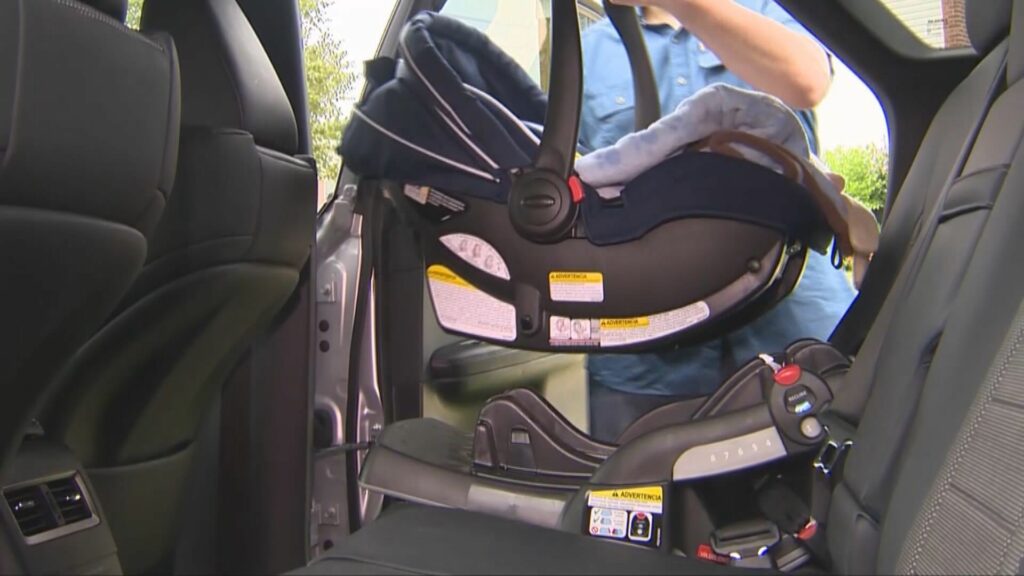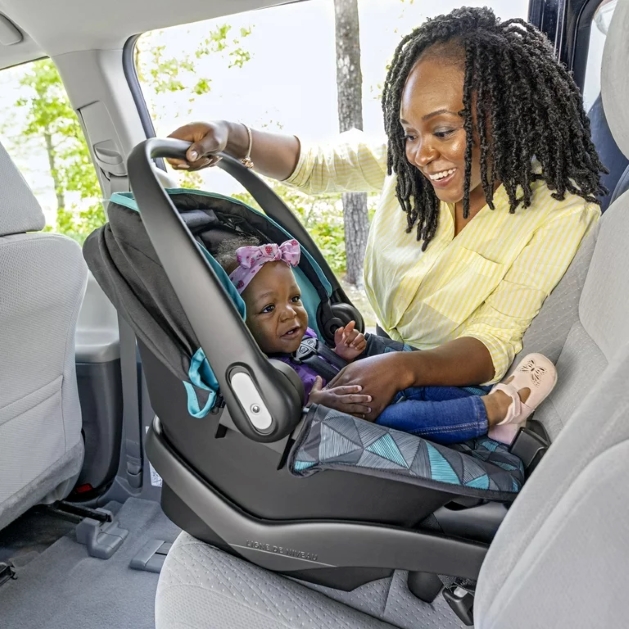When a baby is coming, it seems like there are a million things you need, from clothing and bottles to cribs, strollers, baby bouncers, and more. And, while you can make some compromises in those areas, your baby’s safety when travelling is non-negotiable.
Choosing an infant car seat is one of the most important decisions for every new parent. Safety, comfort, and compliance with regulations are paramount considerations. What are the factors to consider, what types of car seats are available, and what makes a good car seat? – These are only some of the questions that all, but especially first-time parents, are concerned with.
Types of Car Seats

The laws in every province and territory in Canada state that children must be buckled up in a model that’s compatible with their height and weight. With this in mind, easy-to-install rear-facing infant car seats that are designed specifically for the child’s first year of life can offer the necessary support, while forward-facing seats are allowed for children aged two and up.
Infant Car Seats
Designed for newborns and young infants, these rear-facing newborn car seats provide optimal support for a baby’s fragile head, neck, and spine. They have a weight limit of 10 to 16 kg and come as a part of a larger travel system, a seat base. The advantage of infant car seats is that you can easily remove the seat and snap it directly into a stroller.
Convertible Car Seats
These seats convert from rear-facing to forward-facing as your child grows. They offer longer usability but may lack the convenience of a detachable carrier. Be sure to follow the height and weight recommendations, as well as minimum age requirements.
Booster Seats
Older children (aged four and up), who have outgrown forward-facing seats but are not yet ready for adult seat belts, need a booster seat. Boosters position the child correctly to use the vehicle’s seat belt safely. A child should remain in this type of car seat until the vehicle’s standard seat belts fit properly.
Factors to Consider
Safety Standards
All car seats sold in Canada must be tested to meet government safety standards, no matter the price tag. Look for the National Safety Mark that proofs the car seat is certified by Canadian Motor Vehicle Safety Standards (CMVSS). These seats meet rigorous safety requirements tested for crashworthiness and durability.
Size and Weight Limits
Ensure the seat accommodates your child’s weight and height within the recommended limits. Infants should ride rear-facing until at least two years of age or until they reach the maximum weight and height allowed by the seat.
Ease of Installation
Proper installation is crucial for safety. Choose a seat with clear instructions and features like LATCH (Lower Anchors and Tethers for Children) for easy and secure installation. Follow the manufacturer’s instructions and the vehicle owner’s manual for proper installation using either the seat belt or LATCH system.
Comfort and Support
Select a seat with sufficient padding and head support to keep your baby comfortable and secure during the journey. Ensure the harness is snug and properly positioned, with the chest clip at armpit level. Remove bulky clothing and blankets before buckling your child into the seat to ensure a secure fit.
What Makes a Good Newborn Car Seat?

• Safety Features: Look for seats with side-impact protection, energy-absorbing foam, and a five-point harness system for optimal safety in the event of a crash.
• Ease of Use: A good car seat should be easy to install, adjust, and clean. Features like one-handed harness adjustment and machine-washable covers enhance convenience.
• Comfort and Ergonomics: Ample padding, breathable fabrics, and adjustable recline positions ensure a comfortable ride for your little one, especially during long journeys.
• Longevity and Versatility: Opt for seats with extended rear-facing capabilities and higher weight and height limits to maximize usability and accommodate your child as they grow.
• Adjustability: Look for seats with adjustable harnesses and recline positions to ensure a snug fit as your child grows.
• Compatibility with Strollers: If you plan to use a travel system, ensure compatibility between the car seat and stroller for seamless transitions.
• Durability and Quality: Invest in a high-quality seat with durable materials and construction to withstand regular use and potential accidents.
Replacement After an Accident: Always replace a car seat following a moderate to severe collision, as it may have sustained damage compromising its effectiveness in subsequent accidents.
The Takeaway
Selecting the right car seat involves considering a lot of factors, but don’t let this overwhelm you. Choose a seat that provides optimal protection for your child’s journey, prioritizing safety above all else. If you need more help, you can turn to the manufacturer’s customer support or contact a child passenger safety technician. By investing in a quality car seat and adhering to installation and usage guidelines, you can ensure your infant travels safely and comfortably on every journey.


